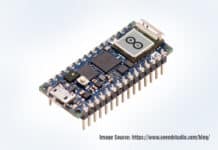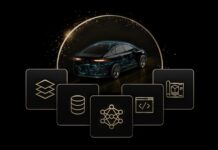In applications like driving or surveillance, where decisions need to be made in real-time and on the spot, edge analytics scores over the cloud. Read on to get a glimpse into what the future could be with edge analytics.
Imagine a child holding a red balloon in a crowded park. She’s with her mother and it is a beautiful spring afternoon. Her mother looks away momentarily, distracted by some noise and when she looks back, her child is gone. She desperately calls out her child’s name and bystanders join in the desperate search. They quickly report the missing child to the information desk in the park, where the security officers view the surveillance camera feeds—both closest to the location where the girl went missing and across the entire park’s camera network, looking for a child with a red balloon. And within seconds, the officers locate the child who had wandered off.
Sounds like a sci-fi movie? Not at all; in fact, the capabilities of artificial intelligence (AI) have progressed even more than what this simple example demonstrates. In China recently, a facial recognition surveillance camera network was able to apprehend a suspect from a crowd of 60,000 concert goers—possible today thanks to real-time ‘edge’ analytics.
What is edge analytics?
In a typical Internet of Things (IoT) system, every connected device, except for the cloud, is considered an edge device— mobile phones, surveillance cameras, connected automobiles, Internet gateways, etc. Today, all our data is digital and the number of connected devices is expected to grow to 27 billion in just three years, by 2021. There has been an explosion of data generated, and the location at which data is stored and analysed has become critical to extract the maximum value from it.
In the missing child scenario, imagine the surveillance video feeds from multiple cameras being sent to the cloud over 4G, analysed, and then information sent back to the authorities on the ground. The time to act would be delayed and the results could be tragic. Real-time analytical tools need to work with real-time data, and the best place to do that is where the real-time data sits – on the edge.
Edge analytics is the lynchpin that drives real-time decision-making. So, edge analytics means increased intelligence on the devices at the edge. This translates to increased processing capabilities (compute) as well as higher storage on the edge devices.
The ability to analyse and extract value from data in real-time is a game changer for all industries. Edge analytics is being leveraged by all verticals–smart cities, manufacturing, retail, healthcare, etc.
Edge devices deliver timely, informed decisions
At a high level, there are three crucial functions that define an edge device — compute (processor), storage and communication. Depending on the application, there may be a need for faster processing, multi-core processors to save power, more sensors, contextual awareness, and a huge storage capacity.
Till now, raw data content sat at the edge and metadata was sent to the cloud, but increasingly, context is complementing content. Both content and context drive informed real-time decisions. Raw content from the constant inflow of data from sensors must be turned readily into information or context. Technologies like AI, machine learning (ML) and image recognition, when applied onto edge devices, interact with real-time data to generate the context. With context, we gain quick and actionable insights to immediate environmental stimuli. Access to this kind of information ultimately creates a more efficient and effective environment.
For instance, let us look at a home surveillance camera. Typically, when someone rings your door bell, you can determine whether it’s someone you know – such as a relative or the domestic help – before you open the door. But by adding facial recognition software, the technology could verify whether the delivery truck driver who rang your doorbell is truly an employee of the company he claims to work for, just by tapping into an employee database. If the software could intimate you that the person is not who he claims to be, then this is a timely warning that prevents you from opening the door.
Another application of edge analytics is in the automotive industry. With connected cars or fully autonomous vehicles, proximity sensors are critical to being able to identify impending danger and play a key role in autonomous driving. These vehicles’ proximity sensor data, however, may never be pushed to the cloud because they can’t afford the time lag. When your vehicle is too close to an object for comfort, the analysis needs to be near-instantaneous, based on real-time data, in the car itself, in order to deliver a real-time response. On completing your journey however, the proximity data may no longer be needed (since the environment has changed). Thus, this kind of data could be flushed from memory, post occurrence, since it will no longer be of use.
To truly take advantage of actionable insights and real-time response on edge devices, both reliable, resilient storage and powerful analytical tools will need to reside at the edge. Here, timeliness is critical, as this actually converts content into context and passive decisions into informed decisions.
Embedded solutions help capture, aggregate, transform and preserve data across IoT devices that range from smartphones, drones and surveillance cameras, to connected cars, appliances, personal devices, sensors and more. These devices reside at the edge where our embedded solutions work behind the scenes in increasingly smaller, but simultaneously more powerful solutions. AI is hard at work at the edge, analysing and processing data to give real-time feedback.
What lies ahead
AI seems to be touching our lives at every turn. Typically, you listen to radio traffic reports during your morning commute. You might hear about a car accident on the radio and take a different route. Today, AI-infused talking personal assistants on our smartphones can tell you the best way home and even reroute you along the way. Thanks to them, we know more about our surroundings than ever before.
We are also starting to learn more about what’s going on inside the human body. There are new edge devices that go beyond tracking steps, heart rates and calories burned. These devices are enabled by AI to have machine learning (ML) capabilities. They can detect early signs of sickness or stress and suggest appropriate courses of action, such as giving you instructions to take your vitamins, get some sleep, or go see a doctor! The so-called ‘empathetic AI’ to help with depression is already in use, and will only be advanced to help us live a healthier and more fulfilling life.
Although we are seeing more AI-driven applications in our everyday life, AI is still in its infancy. We’ve only scratched the surface of what it can become. As we can see from a series of talks by Jason Silva, a technology enthusiast and self-proclaimed futurist, data is now alive. It’s talking back to us. It’s driving IoT to ultimately become a world of intelligence, by leveraging the edge.
















































































